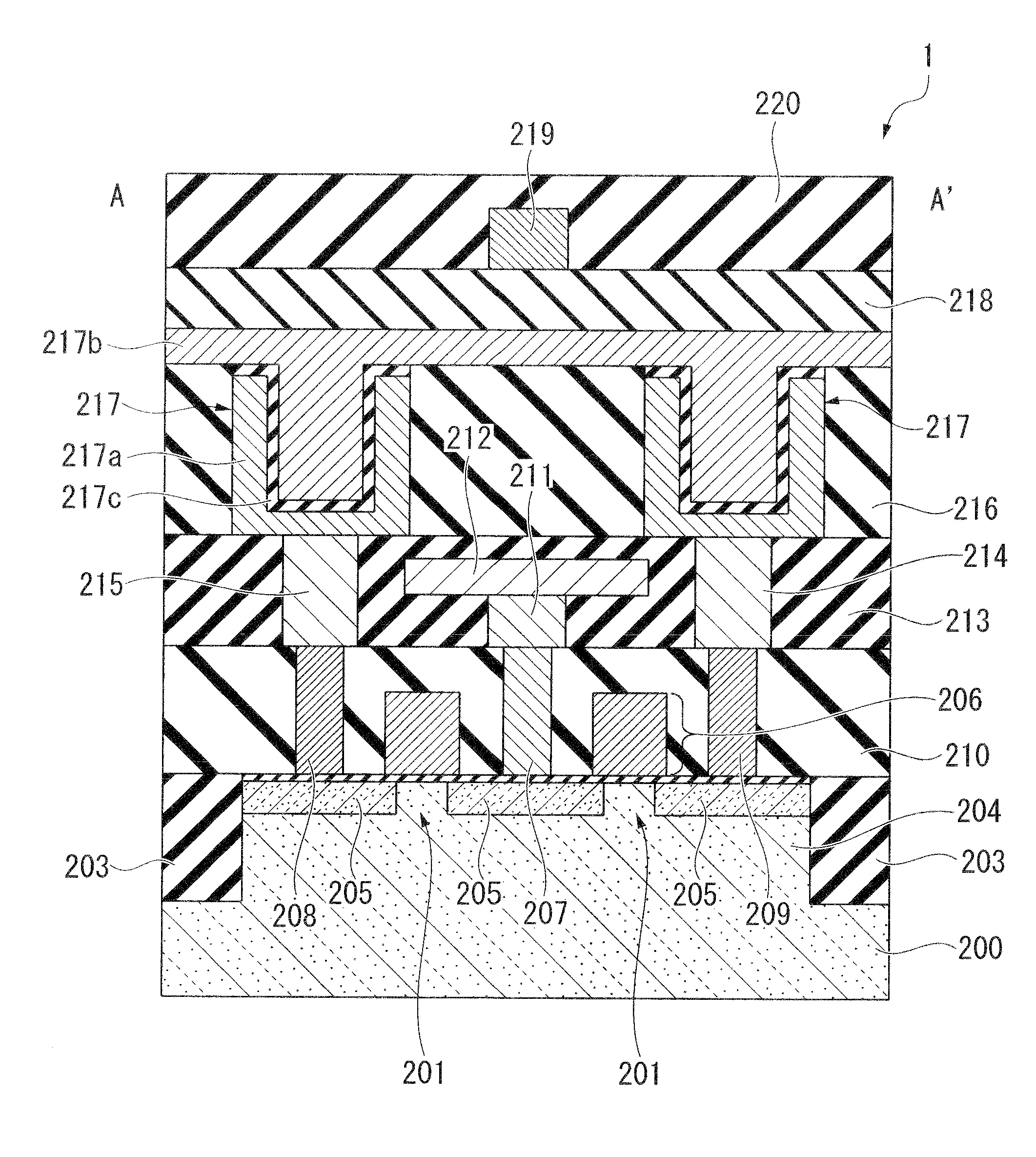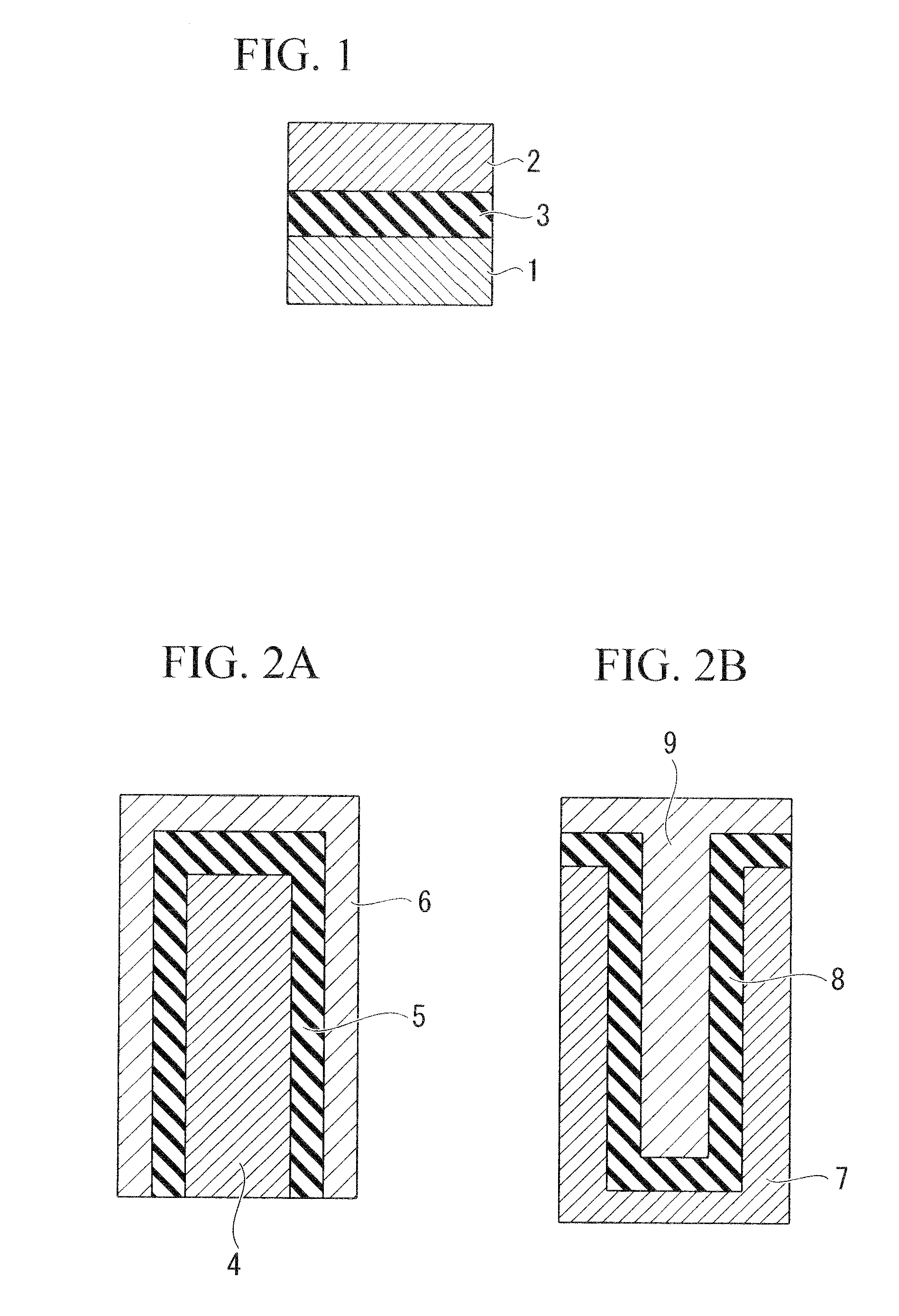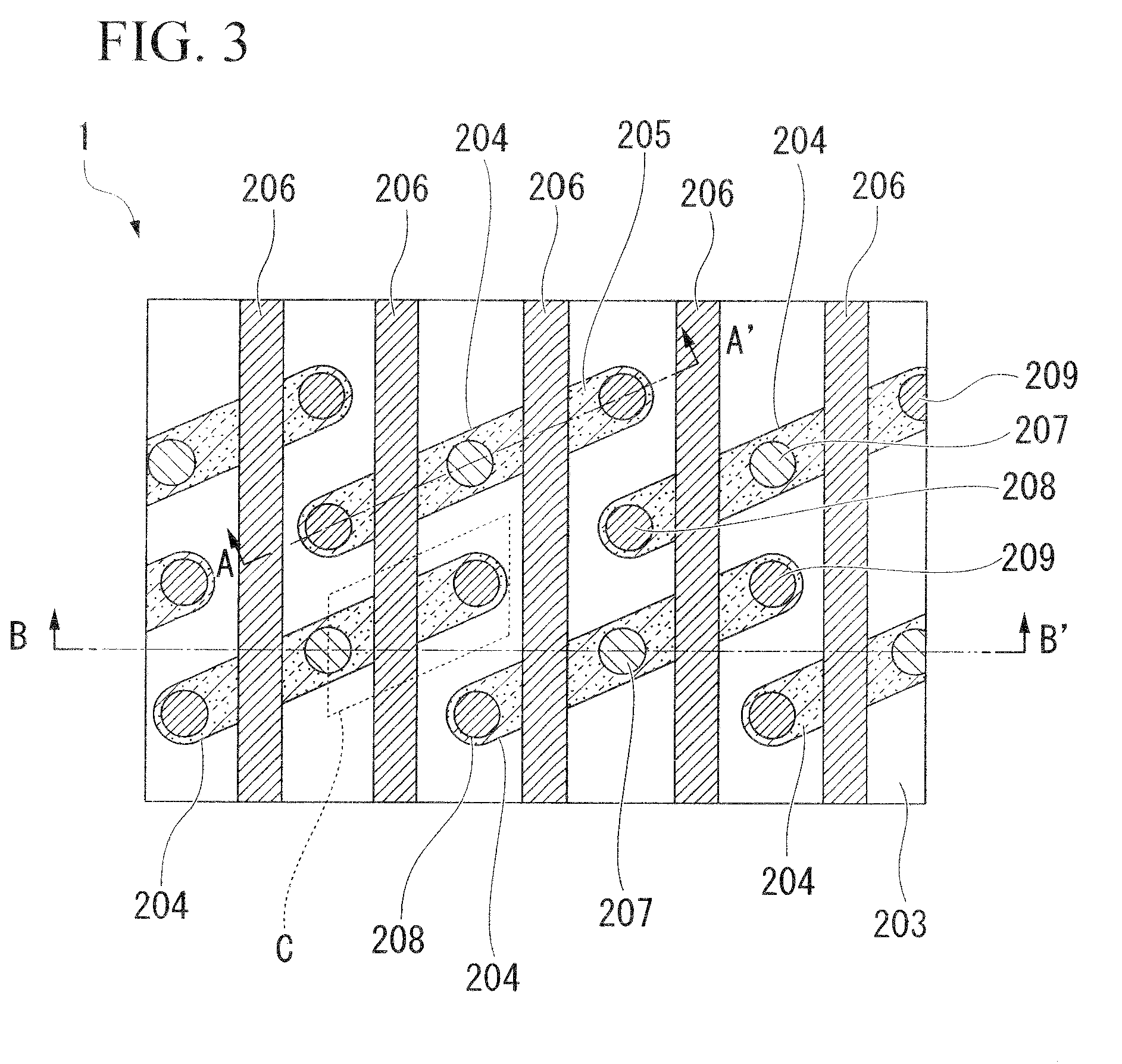Insulation film for capacitor element, capacitor element and semiconductor device
- Summary
- Abstract
- Description
- Claims
- Application Information
AI Technical Summary
Problems solved by technology
Method used
Image
Examples
example 1
[0065]As example 1, an evaluation of the properties of a capacitor element which uses insulation film that is formed by adding yttrium to niobium pentoxide film is stated below.
[0066]First, the method of manufacture of the capacitor element used for evaluation is described As shown in FIG. 5, a silicon oxide film 11 (SiO2) was formed to a thickness of 50 nm by 1000° C. wet oxidation on top of a silicon substrate 10. Next, as a lower electrode, a platinum (Pt) film 12 was formed to a film thickness of 100 nm by the sputter method with DC discharge at 50 W power, at pressure of 1.0 Pa in an argon (Ar) gas atmosphere, and with the substrate temperature at room temperature.
[0067]Next, as insulation film 13, niobium pentoxide film was formed with addition of yttrium using a multi-source sputtering apparatus. During fabrication, RF discharges were simultaneously conducted inside the chamber of the sputtering apparatus using targets of Nb2O5 and Y2O3. Here, the semiconductor substrate 10 o...
example 2
[0072]As example 2, evaluation of the properties of a capacitor element which uses an insulation film that is formed by the addition of tantalum (Ta) to niobium pentoxide film is stated below.
[0073]With the exception of the insulation film, the capacitor element was formed by the same method as example 1, and platinum film was used as the lower electrode of the capacitor element. The insulation film was formed by the sputtering method, and Nb2O5 and Ta2O5 were used as the targets during film formation. The insulation film was subjected to annealing treatment for 10 minutes at 600° C. by a furnace apparatus using oxygen gas. After this annealing, the insulation film was in a state that was not completely crystallized. By controlling the RF power supplied to the respective targets, the addition ratio of tantalum relative to niobium (Ta / (Ta+Nb)) was varied in a range of 0-100%.
[0074]Table 1 shows the results of measurement of the ratio of tantalum and niobium in the formed insulation f...
PUM
 Login to View More
Login to View More Abstract
Description
Claims
Application Information
 Login to View More
Login to View More - R&D Engineer
- R&D Manager
- IP Professional
- Industry Leading Data Capabilities
- Powerful AI technology
- Patent DNA Extraction
Browse by: Latest US Patents, China's latest patents, Technical Efficacy Thesaurus, Application Domain, Technology Topic, Popular Technical Reports.
© 2024 PatSnap. All rights reserved.Legal|Privacy policy|Modern Slavery Act Transparency Statement|Sitemap|About US| Contact US: help@patsnap.com










